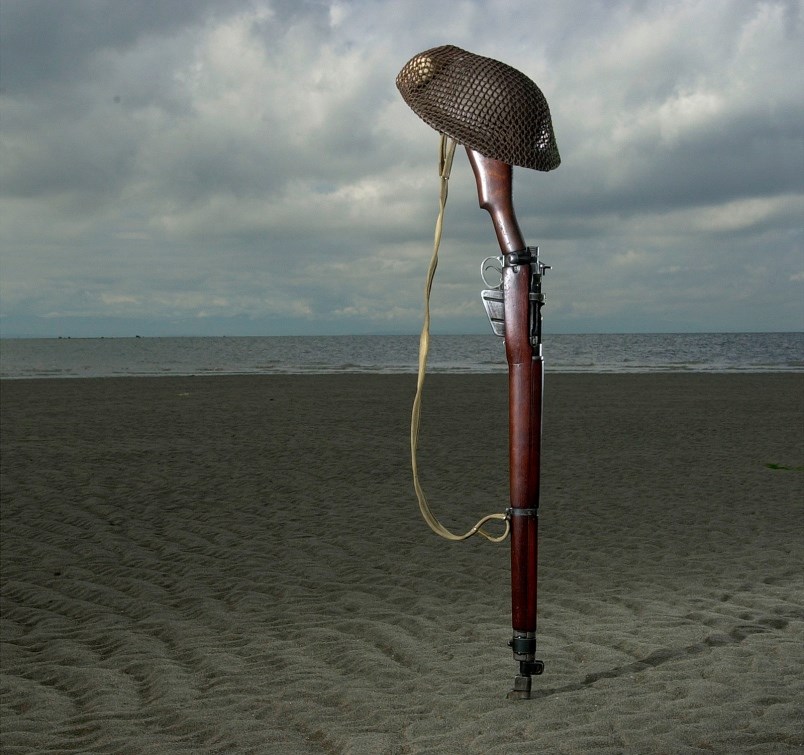Note: Today is the 80th anniversary of D-Day. V.I.A. is re-posting this June 6, 2004 feature story from the Vancouver Courier, written by reporter Mike Howell, to mark the occasion.
Today, on a beach in Normandy, 79-year-old Tom Stewart will remember a brutal day on which he and his fellow Canadian soldiers made this nation proud.
He'll be there with two of his sons, Robert and Gordon, to reflect on the courage thousands of young men showed 60 years ago during World War II in the greatest seaborne invasion in history.
He'll be there with two of his sons, Robert and Gordon, to reflect on the courage thousands of young men showed 60 years ago during World War II in the greatest seaborne invasion in history.
"It'll be nice to share it with my sons," Stewart told the Courier, prior to leaving for France. "I've never been back, so I don't know what to expect. It's been a long time."
Sitting in a recliner in his Burnaby townhouse, bundled in a crimson cardigan and warmed by a fire at his feet, Stewart did his best not to break down as he recounted the D-Day Invasion.
Stewart grew up in Kerrisdale, 80-year-old Defoe in Nelson and 85-year-old Gregoire in Ericksdale, Man., a farming town north of Winnipeg. Each man enlisted out of a sense of duty to his country, and for adventure.
Unlike Stewart, Defoe won't be in France today, having returned to the beaches of Normandy in 1993. Gregoire thought about going, but couldn't leave his ailing wife.
The aging trio, who don't know each other, rarely speak of the war to relatives and friends, preferring to talk about music, golf and the achievements of their grandchildren.
They're from an era when men didn't discuss their feelings — the term post-traumatic stress, the condition often attributed to today's Canadian peacekeepers, wasn't coined when these men stormed the beach on that sixth day of June, 1944.
Fourteen thousand Canadians landed on D-Day. Of that number, 340 were killed, 574 wounded and 47 taken prisoner. Five days later, as the Canadians pushed into occupied France, the death toll mounted to 1,017.
By the fall, 5,020 Canadians were dead.
How Stewart, Defoe and Gregoire survived is a question they often ask themselves. But "lucky" is not a word they use, considering what they saw that day.
"There were guys with their heads blown off, their legs blown off, and after a while, every deadsoldier looks the same," Defoe says. "But when you look at the uniform, and it's a Canadian uniform, that's when it hits you. It's hard to take, really hard to take."
Ted Gregoire's story
Gregoire was the first of the three soldiers to head for the beach.
A member of the Royal Winnipeg Rifles, the then 24-year-old farm boy was loaded down with his .303 rifle, ammunition, grenades, a shovel and other supplies.
At about 5 a.m., under a cloudy sky, he scaled down the scramble nets hanging off the side of a troop ship in the English Channel. It was cold and windy, with large swells making the landing crafts below look like "corks on the sea."
All around him were thousands of ships, overflowing with Canadian, American and British soldiers. Military planners chose Canada to take Juno beach, one of the five code-named beaches along the 80-kilometre stretch of the Normandy coast.
The Americans would storm Utah and Omaha beaches, and the British would land at Gold and Sword. Juno was in the middle, backing onto the towns of Courseulles-sur-Mer, Bernieres and St. Aubin.
Gregoire squeezed himself into one of the benches in the transit-bus-sized landing craft. Some of the other 27 soldiers stood, facing the shore. Many vomited, leaving the floor of the craft a slippery mess.
"We were so damn seasick and scared that we would have paid somebody to shoot us," says Gregoire, recounting the details from the kitchen table in his Surrey apartment.
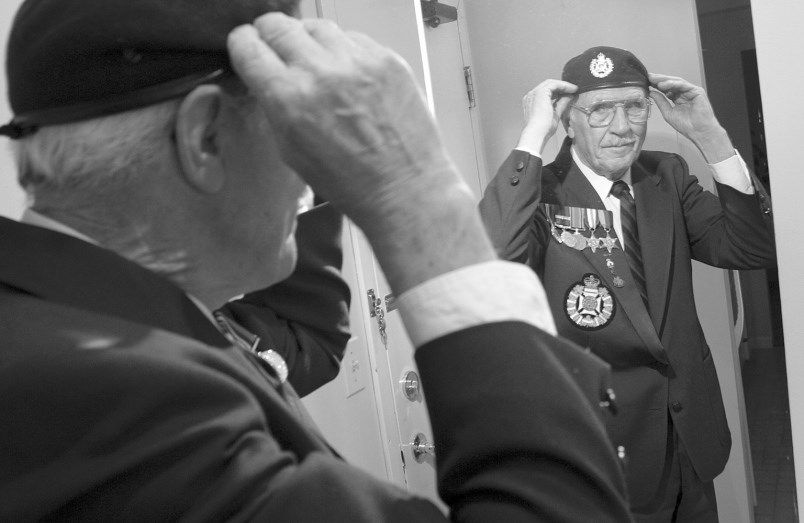
Overhead, he could hear the roar of the Allied planes and blasts from the gunships in the channel. Ahead, landing crafts exploded as they ran up on mines. Soldiers were crossing themselves.
When the ramp of his craft dropped into the sea, Gregoire and his platoon were immediately hit with enemy fire from the beach and sloping dunes.
The bullets and shells missed him as he jumped from the craft, landing his six-foot frame in icy water up to his armpits. With all his gear hanging off his water-drenched woolen uniform, he could hardly move.
"It was like dumping a sheep in the water. Don't ask me how I didn't get hit, or how many got hit, but I remember jumping over bodies between the landing craft and the beach."
He then worked his way up the beach, running over a patch of apron wire until he and four others met up to plan their assault on a concrete German pillbox.
They ran up a path alongside the bunker, unaware one of the Allied tanks was about to fire an armour-piercing round. The blast killed the soldier in front of Gregoire, who only suffered a split lip.
The tank round, however, didn't stop the gunfire, so Gregoire and another soldier took turns climbing on each other's shoulders to launch grenades into the pillbox.
By this time, more Allied tanks had come ashore and had all but silenced the enemy fire on the beach and in the dunes. Minutes later, a hand waving a white towel poked out from the pillbox.
Three Germans surrendered.
Once Gregoire turned them over to headquarters on the beach, he and what was left of his platoon pushed inland to Courseulles. Exhausted, hungry and numb from what he'd seen, his journey was about to get worse.
Two days after landing on the beach, he was digging a trench outside a farmyard when he heard a German voice behind him. He looked up to see a German soldier with a machine gun.
"That was the beginning of the end for me," says Gregoire, who spent the rest of the war as a prisoner, working in a brick factory near Leipzig.
To get there, he spent 16 days crammed in a stifling boxcar with other prisoners, including an American sergeant who was murdered by a German soldier.
Gregoire witnessed the killing shortly after the train was strafed by an Allied plane that was unaware of the prisoners on board. The Germans — Jerries, as Gregoire calls them using slang from the war — then rounded up the prisoners, who had leaped from the train to take cover. That's when a German soldier began shouting at the American prisoner, took out his pistol and shot him dead.
"One of our German guards on the train then went over to him and said something in German. He pulled out his gun and did the same thing to him — one of his own. I'll never forget that."
For eight months, Gregoire toiled in the brick factory, living on vegetables and boiled margarine. Thin, tired and depressed, he was eventually rescued by American soldiers in April 1945.
"I remember the Americans gave us fruit cocktail for dessert that night. I can still taste it."
A few months later, he returned to the family farm, where he helped his father — a World War I veteran — harvest hay. They didn't say much to each other, Gregoire recalls, but there seemed to be an understanding between them.
"There wasn't much of a conversation, but we didn't really have to say much."
He moved west in 1957, with his new bride, Mary Belle, whom he met at a Legion dance in Portage la Prairie, Man. He worked on road crews for the City of Vancouver and West Vancouver, and retired in 1983.
Gregoire will be 86 in November, but appears younger. He does most of the cooking and housework in the couple's apartment, and enjoys tending to a small flower garden.
He has a few pictures on his wall from his service days. He also keeps a shoebox — marked "war" in felt pen — of mementos, including his berets and medals.
Just enough memories not to forget, he says.
"It's something you have to let go of. I mean, you can talk about it, but you can't dwell on it. I guess you have to have a certain amount of pride for going over there, and be grateful you came back. But I often think how they missed me on the beach that day. It's something I'll never know."
Ernie Defoe's story
Fighting to Gregoire's left on D-Day was 20-year-old Defoe, a member of the Regina Rifles and the son of a railway worker from Nelson.
He landed on the beach shortly after Gregoire, as part of the second wave of Canadians. His landing craft, however, almost didn't make it, running up on a mine near the shore.
Fortunately, it failed to detonate.
Minutes earlier, Defoe watched two soldiers get blown to pieces as their landing craft hit a live mine. Defoe feared the worst.
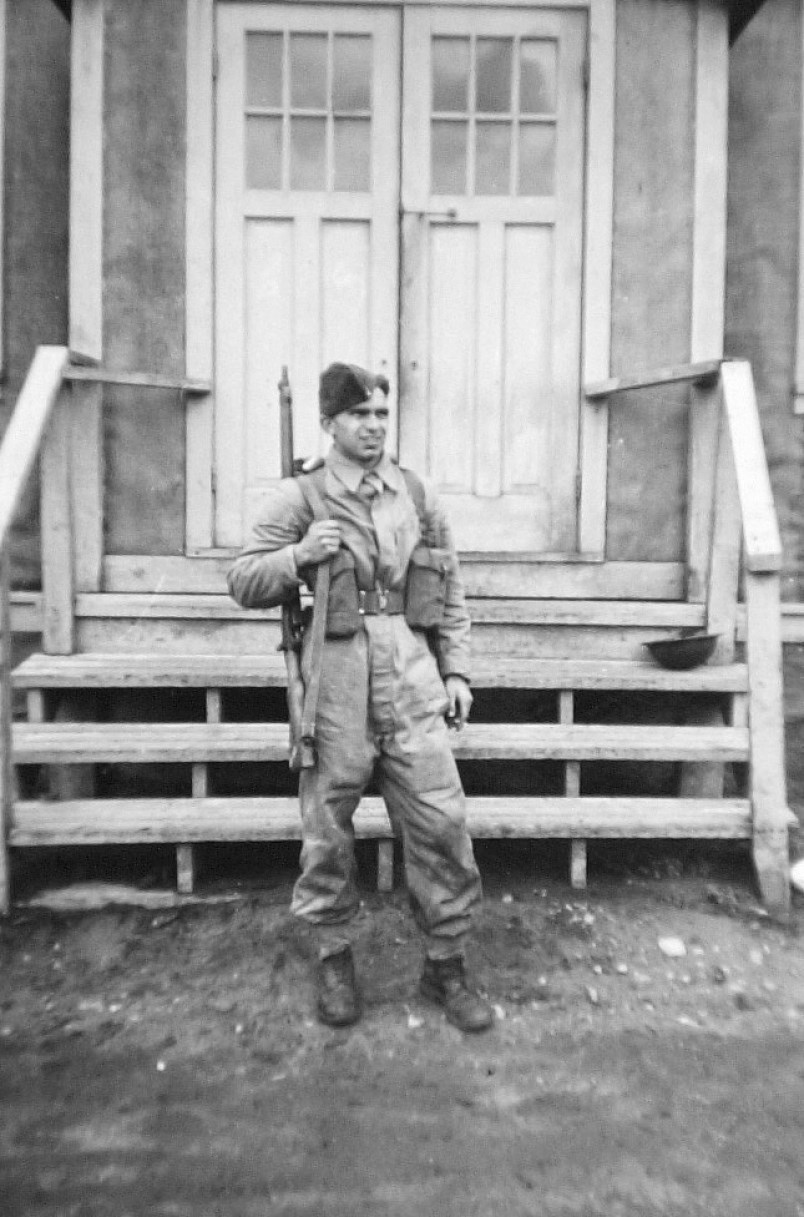
Quickly, he and soldier Harry Dreiver used their daggers to cut off each other's equipment. They jumped overboard, dodging enemy fire, and made it to shore.
"I'll never forget Harry. He was a big native guy who later got killed. Hell of a guy," says Defoe, noting a lake in northern Saskatchewan is named after his friend.
Defoe's memory of what happened next isn't as clear as Gregoire's, or as he admitted later, he's probably blocked out some of the bad times.
From reading history books, he knows the Regina Rifles' objective that day was to hold a bridge, which they did. He also remembers being hunkered down behind a farmhouse in a firefight.
"The historians remember more than I do. I was just interested in getting this the hell over with. You have one objective in mind, and that's to get the hell home."
As a rifleman with basic first-aid training, Defoe's duties included dressing wounds of soldiers with sulpha powder and feeding them tubes of morphine. To ensure the medics found the wounded, Defoe stuck the soldier's rifle in the ground, placed the helmet on the butt end and continued running.
"We were always on the move, and it was hard to leave [the wounded] behind, but that's the way it was."
At his recent 80th birthday, a friend who lives in his 44th and Main neighbourhood, wrote a letter to be read that thanked Defoe for patching up his cousin during the war.
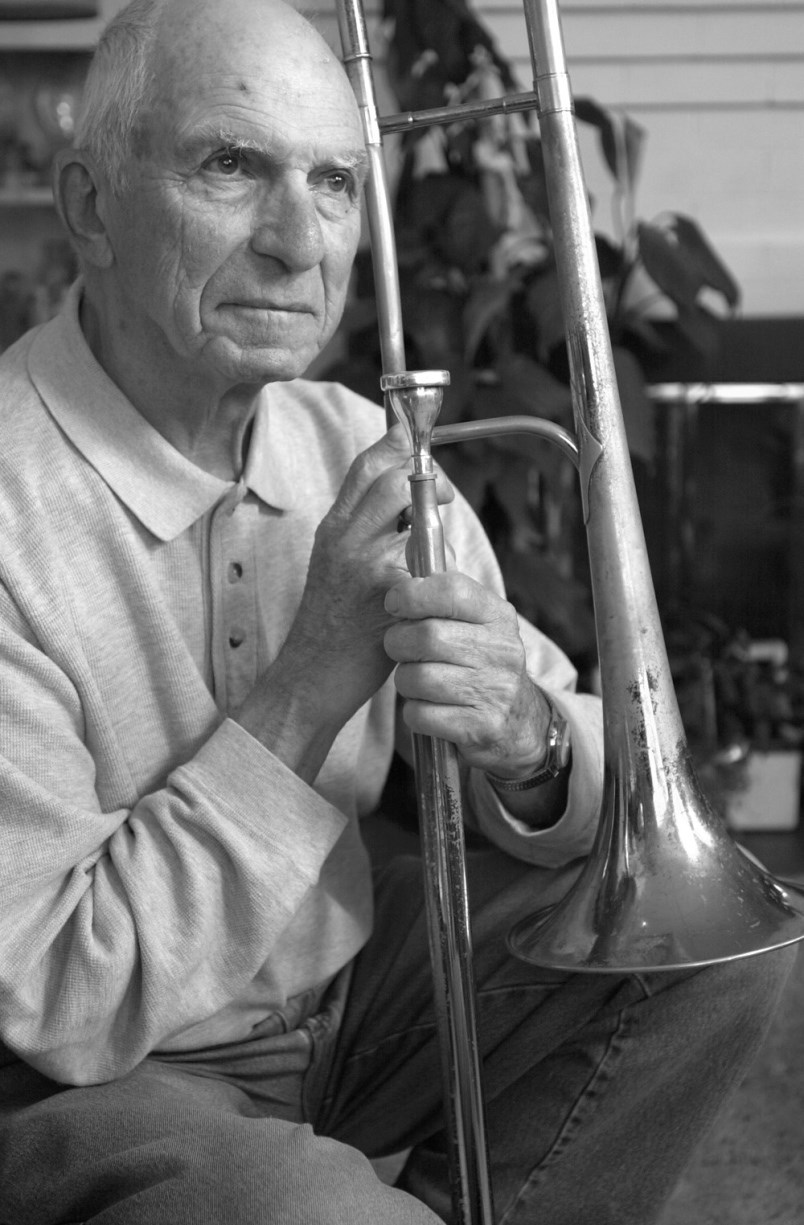
Defoe's wife, Georgie, told that story when Defoe left the kitchen to look for a war photo in a scrapbook.
"He doesn't like to talk about the war much," says Georgie, almost whispering. "We were married five years before he said anything about it. I can't imagine what it was like for him."
After landing on D-Day, Defoe battled through France, Belgium, Holland and Germany until the war ended in May 1945. Through it all, he never got hurt.
When he returned to B.C., he settled in Vancouver, where he landed a job as a firefighter with the Vancouver Fire Department. He took the job, he says, not because he was in a hurry to treat more wounded people, but because the department had a band.
"I wasn't making any money playing in bands after the war, so I joined," says Defoe, who plays the trombone. "The bandmaster said they were taking people on, and if I didn't like it, I could leave."
After 35 years at the department —a job he likens to war, in the sense that it involves "short bursts of excruciating excitement followed by long periods of utter boredom" — he retired in 1984.
Music, however, is something he never plans to retire from. Defoe still plays trombone in a band called Preservation of Swing, playing recently at the Terminal City Club.
Blowing his way through standards such as "In the Mood" and "Pennsylvania 65000," he says, helps him forget the horrors he witnessed as a teenager and young adult.
He was only 22 when he returned to Canada.
A musician since the 1930s, when he played with the Nelson Boys Band, Defoe believes the power of music can help lift a person's spirit and ease the mind.
"When you're reading the charts and playing, it's just so different from anything else you could do. I know doctors and lawyers who play for that one reason. It's a stress reliever."
Next year, his regiment is holding a reunion, but Defoe says he plans to attend his grandson's graduation in Trail, instead. At this point in his life, he says, family is more important than hooking up with veterans.
Besides, he says, he returned to Normandy in 1993 with his wife and daughter, visiting the same beach he landed on that life-changing morning all those years ago.
"It was just so different from when I was there. Somehow, it just didn't seem right. It wasn't what I saw back then."
He knew there was a monument to the Regina Rifles on the beach, but couldn't find it. He walked into a pub near the beach to ask for directions.
"That pub had been there for years, and the guy running it had to walk past that memorial every day, but when I asked him about it, he didn't know what I was talking about. That really bothered me."
Still, Defoe is glad he went. He stopped in another town where he had fought and ordered a Calvados, a popular drink in Normandy. After all these years, he still remembers how good it tasted.
Tom Stewart's story
When Tom Stewart reached the beach around noon on D-Day, Defoe and Gregoire were already on their way inland.
The sun had replaced the clouds, the enemy had retreated and the just-turned 19-year-old from quiet Kerrisdale finally got his wish — he was at war.
"I thought the war might be over by the time I got overseas," he says, noting the army didn't allow him to leave for England until he turned 19. "It just seemed like it would be more interesting than school, so I left in Grade 11. The idea of being killed didn't register — I was young and invincible."
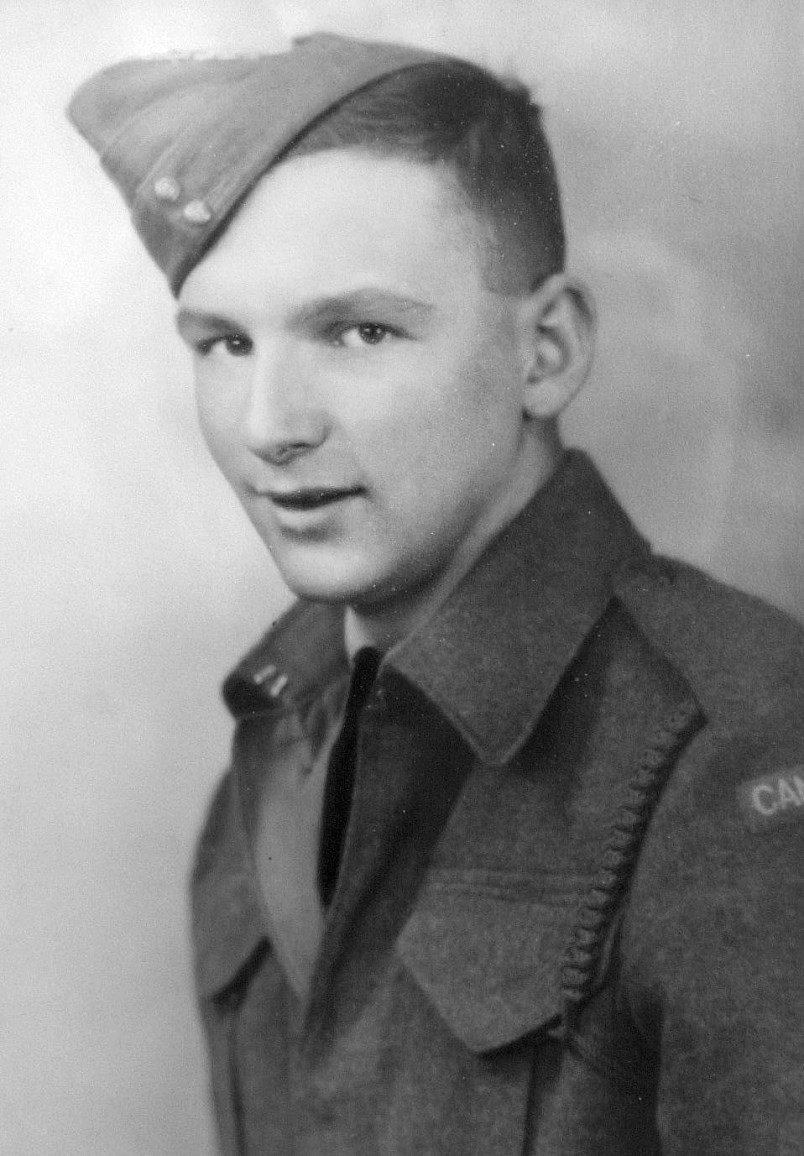
Like Defoe and Gregoire, Stewart was stationed in Debert, N.S., until he was given the nod to ship out of Halifax in April 1944 to Liverpool. From there, he went to the Aldershot base, then settled in a camp in a park, just east of London.
He was in England for less than two months when he got the call to start marching to the docks. He boarded a ship on June 5, 1944, knowing he was going somewhere, probably Europe.
When he woke the next day, the sight of hundreds of ships on the sea and a cluttered beach in the distance quickly signaled to Stewart that he would be facing the enemy. The deadsoldiers he saw on the beach confirmed that.
He spent the night in a field, where he and hundreds of other reinforcements sat back and watched "a festival of fire" as the Allied forces lit up the sky with shells and bombs. "The tracers, the explosions — we were in awe of it."
A couple of days later, after searching for snipers — and in shock from the news that 22 Canadians attached to an Ottawa regiment were killed in a bomb blast — Stewart reached an orchard.
There, he and about 200 reinforcements stood and looked around at what was left of the North Nova Scotia Highlanders regiment. Stewart shakes his head in disgust at the memory.
"You have to appreciate that these fellas had come over from Canada and lived together for two years before D-Day, and in three or four hours, the unit was literally destroyed. The C.O. [commanding officer] never got over it and had to be replaced. I don't know how many men they lost, but I can tell you we weren't very crowded in that orchard."
They were nervous days for Stewart, who recalls constantly focusing on the ground to pick out a spot to take cover as he walked through the wheat fields and orchards.
He laughs when he tells the story of fellow soldiers, on leave in London, jumping in a ditch at the sound of a loud noise. Finding the humour in war is difficult for veterans, but Stewart insists it's better to remember those times than the horrors.
Two months after Stewart hit the beach, he got hit with shrapnel in his right leg on his way to Falaise. He says the wound wasn't that serious, even though it required him to be shipped back to a hospital in England "for a holiday."
About a month later, he returned to the battlefield and fought until the war ended in May 1945. He wasn't ready to leave, however, saying he knew nothing but the life of a soldier.
"I didn't have any skills, and didn't know what to do in life."
So he joined the Seaforth Highlanders regiment and helped fight the floods on the Fraser River in 1948. Over the years, Stewart has worked at various jobs, including stints as a liftspan operator, motel owner, as co-founder of Big Brothers in B.C. and a program worker for the Association for Retarded Children.
He was married to his late wife, Irene, for 44 years, and has six children, including four boys, two of whom will be with him today on the beach in Normandy.
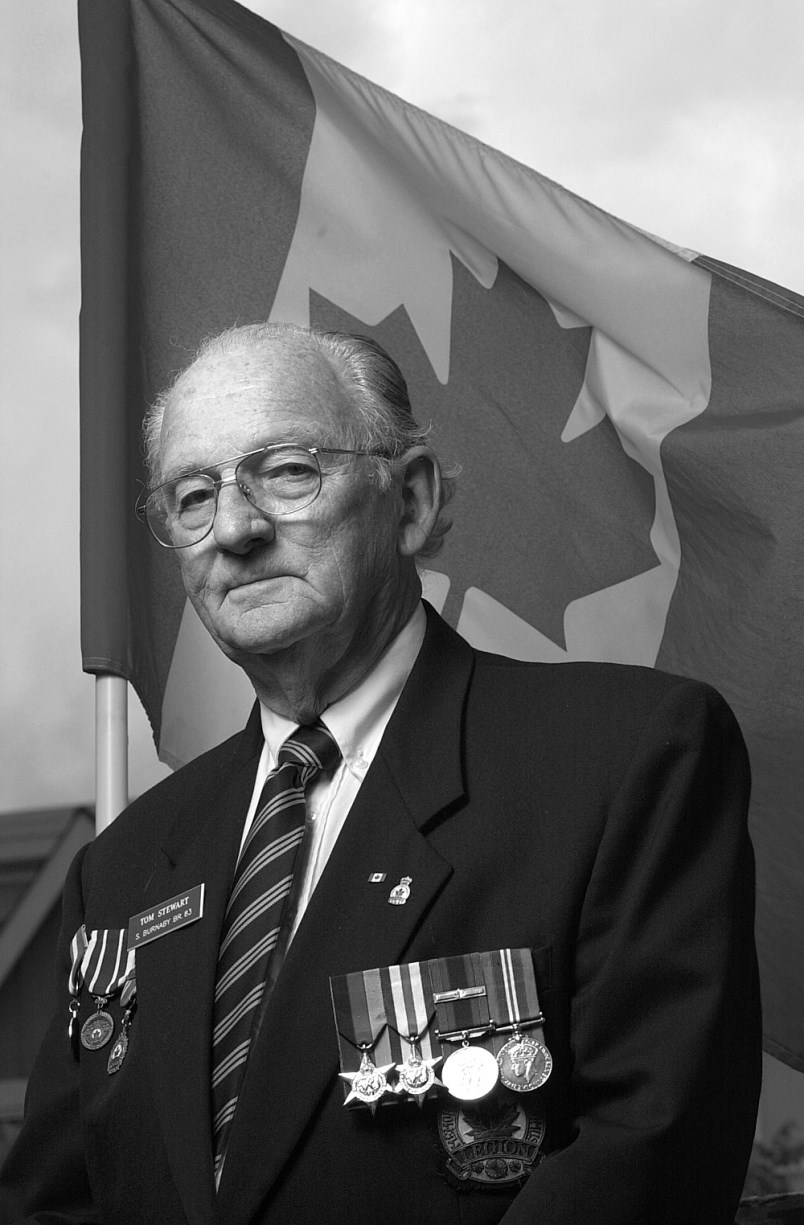
"It's something that I couldn't pass up — hell or high water, I have to go," says 45-year-old Robert Stewart, a former cadet. "I will never get this opportunity to share this time with my father ever again. I'm not so sure how I'm going to handle it. It will no doubt be emotional."
Tom Stewart also knows this will be a special moment. As he gets on in age, the ability to travel — let alone overseas — will become more difficult.
But as a veteran of D-Day who proudly flies the only Canadian flag at his Burnaby townhouse complex, Stewart believes all Canadians should one day visit Normandy, or at least take a moment to recognize the dead, the wounded and the survivors.
Today, he says, would be a good day to do that.
